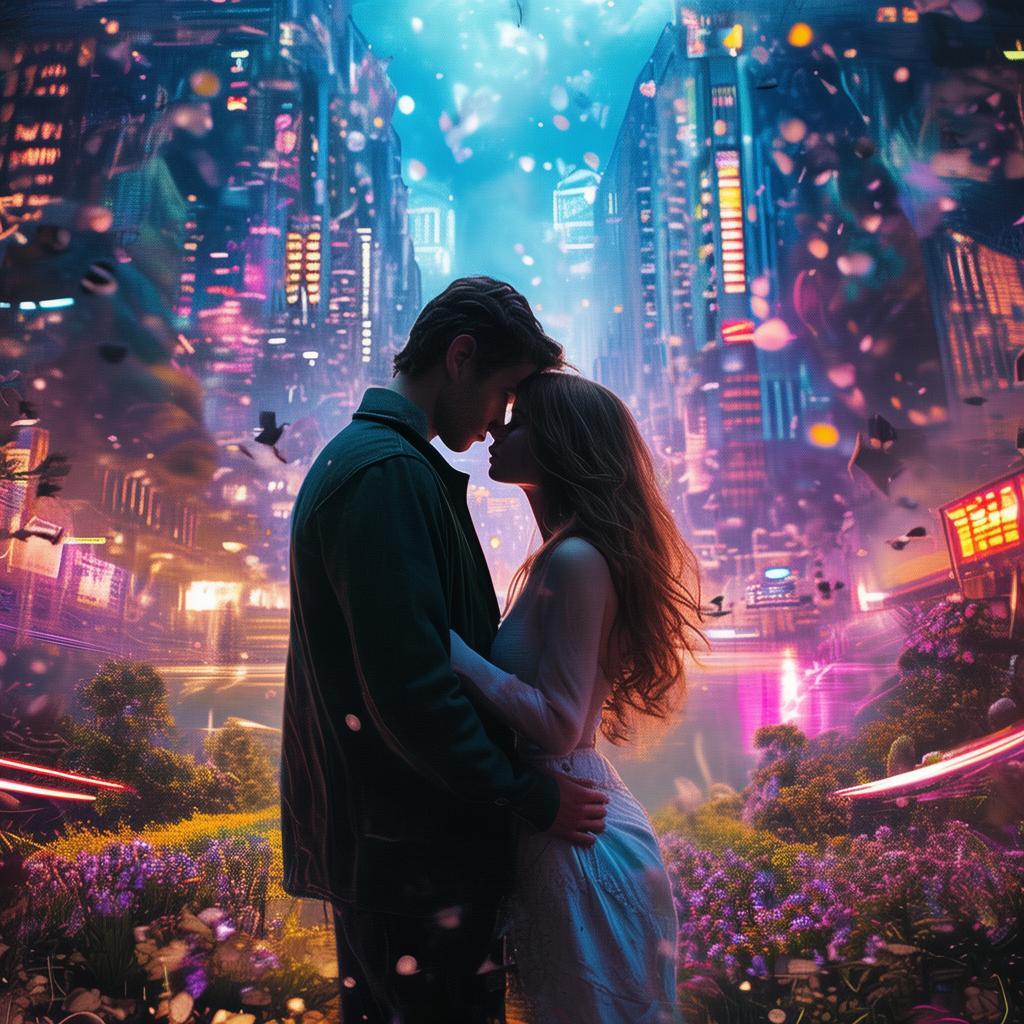The Neon Shadow of Love
In the heart of a bustling metropolis, where the glow of neon lights painted the night in hues of red and blue, there lived an artist named Eliza. Her life was a canvas of colors, but it was the shadows that held the true essence of her existence. She was known for her ability to capture the quiet moments, the unspoken words, the loneliness that often accompanied the human condition. Eliza found solace in the works of Edward Hopper, whose paintings spoke to her in a language that words could not express.
The story began in a gallery, where Eliza's latest exhibition, "The Neon Nostalgia," was on display. The gallery was a labyrinth of dark corridors and small rooms, each illuminated by the soft glow of neon lights. Eliza stood before one of her own paintings, a silent figure gazing out from a window, bathed in the cold, artificial light of the city. The painting was titled "Love's Journey," and it was her attempt to capture the essence of her own love story.
In the gallery, she met a man named Leo, whose eyes seemed to pierce through the canvas and into her soul. They shared a silent understanding, a connection that transcended words. Eliza felt a strange pull towards him, as if she had known him for a lifetime, yet they had never met before.
Leo was a musician, a man who found his voice in the symphony of the city. He played the piano in the evenings, his fingers dancing over the keys as if they were alive. Eliza was captivated by the sound of his music, a haunting melody that seemed to echo the loneliness she felt within herself.
As the days passed, their paths crossed more frequently. They spoke of art, of life, of love. Eliza felt a sense of nostalgia, as if she were walking through a memory of a past love. Leo, too, seemed to be haunted by something, a shadow that followed him wherever he went.
The city was a backdrop for their love story, a place where the past and the present intertwined. Eliza's paintings were a reflection of their emotions, each brushstroke a story, each color a feeling. "Love's Journey" was her attempt to depict the complexities of their relationship, the joys, the sorrows, the betrayals.
One evening, as they walked along the riverfront, Leo confessed his deepest secret. He had loved another woman, a woman who had broken his heart. Eliza listened, her heart heavy with the weight of his words. She realized that the shadow that followed Leo was not just a part of him, but a piece of her own past.
As the days turned into weeks, the bond between Eliza and Leo grew stronger. They shared everything, their dreams, their fears, their deepest desires. But as they grew closer, the shadows began to lengthen, casting longer, darker shapes over their relationship.
One night, as they sat in the quiet of a small, dimly lit café, Eliza noticed a painting on the wall, a portrait of a woman, her eyes filled with pain and longing. She recognized the woman as her mother, a woman she had never known. The painting was a portrait of a love that had never been, a love that had been stolen by the darkness of a lie.

Eliza realized that the shadow that followed Leo was not just his own; it was a part of her own story. She had been living in the shadow of her own past, unable to let go of the love she had lost. In Leo, she had found a reflection of her own pain, and in him, she had found the strength to face it.
The climax of their story came when Eliza confronted the truth. She revealed her own secret, her own love that had never been, and Leo, in turn, revealed his own. They discovered that they were not just lovers, but kindred spirits, two people who had been living in the shadows of their own pasts.
Together, they made a decision to leave the shadows behind. Eliza returned to her art, her paintings now filled with light and color, a testament to the love they had found. Leo continued to play his music, his melodies now filled with hope and joy.
The ending of their story was not a traditional one, but a reflection of the journey they had taken. They had emerged from the darkness, their love now illuminated by the light of truth and understanding. The gallery, "The Neon Nostalgia," had become more than an exhibition; it was a place where two souls had found each other, and where love had triumphed over the shadows.
Eliza's final painting, "The Neon Rebirth," was a portrait of Leo and herself, standing in the glow of the neon lights, their faces illuminated by the light of love. It was a painting that spoke of a new beginning, a love that had overcome the darkness and had found its way into the light.
✨ Original Statement ✨
All articles published on this website (including but not limited to text, images, videos, and other content) are original or authorized for reposting and are protected by relevant laws. Without the explicit written permission of this website, no individual or organization may copy, modify, repost, or use the content for commercial purposes.
If you need to quote or cooperate, please contact this site for authorization. We reserve the right to pursue legal responsibility for any unauthorized use.
Hereby declared.









